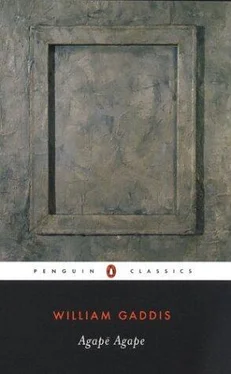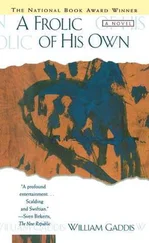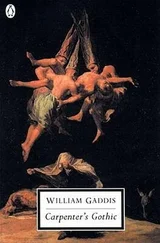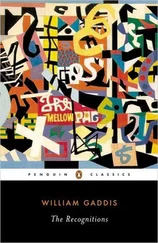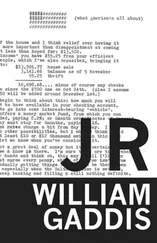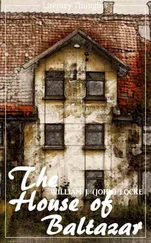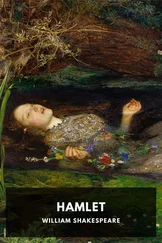Bernhard is certainly a far cry from the meganovelists — Pynchon, Joyce, Melville — whom critics usually associate with Gaddis. But the fiction Gaddis cites with affection and admiration — du Maurier’s Trilby, Tolstoy’s Kreutzer Sonata, John Kennedy Toole’s Confederacy of Dunces — and his public expressions of admiration for the talkative novels of Saul Bellow and Norman O. Douglas should widen the literary context within which his own body of work might now be read and appreciated. What he particularly admired in Bernhard — and in writers as diverse as Joan Didion and Evelyn Waugh — was the economy of style, the ability to write expansively without wasting words. That stripped-down quality was just as important to Gaddis’s own aesthetic as the highbrow satire (in Douglas and Waugh), the entropic vision (in Didion’s Slouching Toward Bethlehem), or the apocalyptic destruction in Yeats’s “Second Coming” (a favorite poem of Gaddis’s, whose high-toned mysticism he had once dismissed but then came to appreciate after reading Didion4). Unique as Agapē may be, it should attune readers to qualities of voice and economies of style that have largely gone unnoticed in Gaddis’s earlier work.
Where the continuities between the earlier and later fiction stand out most clearly is in Gaddis’s previous depictions of artists and writers — characters who, through their appetite for destruction and self-destruction, fail on their own terms. “Overwhelmed by the material demands” their art imposes, these characters — as Gaddis said in an interview in 1987—generally fail “to pursue the difficult task for which their talents have equipped them.”5 Most often they cannot focus their energies and — like Gaddis at work on the player-piano project — they have trouble finishing things. In his second novel, J R, Gaddis would show Jack Gibbs working fruitlessly on sections from Gaddis’s own early drafts for the project. Another character in J R, Thomas Eigen, like Gaddis has written an unpublished play on the Civil War, and this same play, entitled “Once at Antietem,” would be recast and worked into the structure of Gaddis’s fourth novel, A Frolic of His Own. Recycling his own work, and the work of others, was consistent with Gaddis’s overall aesthetic — he was, in many senses, an ecological novelist who at the end cringes to think of “what we destroyed” and who could not bear to see things wasted — not money, not talent, and certainly not the unpublished products of his own creative energies.
At the end of his life, by concentrating his epic research into a novella, Gaddis was following a pattern he had already worked out for still another persona in J R, the young composer Edward Bast. Unable to ward off the demands and distractions of life in corporate America — the materialistic world of “brokers, bankers, salesmen, factory workers, most politicians, the lot”—Bast undergoes a gradual reduction of his musical ambitions. As Gaddis said in the 1987 interview:
Bast starts with great confidence. ., that confidence of youth. He’s going to write grand opera. And gradually, if you noticed. ., his ambitions shrink. The grand opera becomes a cantata where we have the orchestra and the voices. Then it becomes a piece for orchestra, then a piece for small orchestra, and finally at the end he’s writing a piece for unaccompanied cello, his own that is to say, one small voice trying to rescue it all and say, “Yes, there is hope.”6
In Bast, too, Gaddis concentrated “that romantic intoxication” at once ridiculous and wonderful which had seen him through the composition of The Recognitions — a book whose successful completion (and initial commercial failure) haunts the historical project that Gaddis returned to, fifty years later, in Agapē Agape.
Instead of a self-generated cosmos to place over against the material universe, Gaddis imagines this “one small voice”— although it is easily lost in so vast and noisy a novel as J R. Now that the voice has been isolated and made to speak out in Agapē Agape, readers might arrive at a fuller appreciation of what Gaddis was trying to do in his lifelong literary engagement with the materials, systems, and specialized languages of corporate America. The single voice that emerges out of competing voices and constraining media is not only the voice of “artistic individualism” struggling vainly against commodification by the capitalist machine.7 Gaddis does not fool himself into imagining that he can oppose his art’s power to the power of the material world. What he can do, however, is to coordinate his art with the vast systems and structures that now shape our world. And we, in turn, can fashion new images of ourselves within that world by reading, by listening, and by attending to how these multiple voices and worldly materials have been heard and organized by the author.
Rather than opposing an artistic individualism against an impersonal, collectivist technology, Gaddis investigates their common historical roots as creative collaborations. From Vaucanson’s mechanical loom for figured silks to Jacquard to the drum roll on the player piano to the punched data card in the first computers: in part, the digital age owes its existence to the arts. Yet Gaddis, who continued to tear out and save anything he came across on the subject, found scant acknowledgment of technology’s debt. The “frenzy of invention” that culminated in the player piano in 1876 seemed intent, rather, on removing the artist from the arts altogether, just as the century ahead sought to eliminate the very possibility of human failure as a condition for success in the arts. “Analysis, measurement, prediction and control, the elimination of failure through programmed organization”—Gaddis had set the terms and cultural context for a “secret history of the player piano” as early as the 1960s, when the double-take-inducing title, Agapē Agape, first appears in his papers. The title turns up again in J R, as the unfinished “social history of mechanization and the arts” that overwhelms Jack Gibbs by becoming what it’s about: “the destructive element.” Agapē—the community of brotherly love celebrated by early Christian writers — has come apart (agape) through mechanization and a technological democracy that reduces art to the level of light entertainment, a spectacle for the gaze of the masses. Ultimately, the “vast hallucination that’s everything out there and that you’re all part of”—Gaddis addresses his readers here directly — derives from nothing but little gaps, sprockets in a film strip, patterns of holes in paper.
Through all his research on the player piano, Gaddis relentlessly documents an American culture of simulation in which technology has become the only imaginable solution to problems it created in the first place. The same demonic circularity that can sometimes put computer operators “at the mercy of the systems they’ve designed” would inform his narrative of a mind devouring itself in endless self-reflection. But something happens near the end of Agapē that enables Gaddis to imagine an escape from the technological hall of mirrors. Hurried by the sense of his impending death, and finally unable to avoid identification with the biological, abject, material “Other” of his imagination, Gaddis risks a direct personal address — to the reader, and to the ghosts, demons, philosophers, and fictional characters he holds in conversation. This identification with his “detachable selves” makes possible the astonishing final pages, when the man in the bed speaks, evidently without irony or satirical intent, of what he has been able to hold in belief: “Finally I really don’t believe any of it,” except for the evidence of the senses and memory and now, when they are to be lost, in the reality of the youthful “self who could do more,” and its work.
Читать дальше
